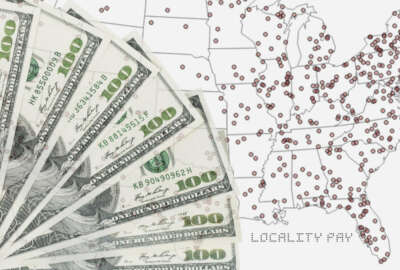
No new recommendations for additional locality pay areas, at least not yet
The Federal Salary Council is still debating a series of controversial changes to the methodology currently used to set federal employee locality pay.
The Federal Salary Council made no new recommendations Tuesday to establish additional locality pay areas for the next year.
But for the regions across the country who say they need higher locality pay to make a dent in their recruitment, retention and other workforce challenges, it’s not for lack of trying.
At least 38 regions have contacted the council about the possibility of becoming their own locality area, but none meet the highly specific criteria needed to earn their own designation — or join an existing locality pay area.
The stories that federal employees and executives told from Charleston, South Carolina; Nashville, Tennessee; central Florida; southern New Jersey; Boston, Massachusetts; and other regions are all similar.
Local Veterans Affairs facilities, military bases and FBI regional offices are all struggling to recruit and retain talent.
Four senior executives from Charleston traveled to Washington, D.C., on Tuesday to make their case again before the council.
The commander of Joint Base Charleston, Col. Terrence Adams, said he’s used direct-hire authority and special pay incentives to attract top talent, but the most qualified candidates are still declining their job offers once they hear about the salaries.
“From my assessment, in terms of locality pay and what we go through from an employee standpoint, this is the worst I’ve dealt with in my career,” Adams told the council. “I’ve served in the military for about 34 years and moved around at different parts of the nation and overseas, and I’ve had my toughest time hiring people in Charleston.”
Council members seemed sympathetic to nearly all of the employees who traveled to make their case. But regions like Charleston don’t meet the statistical test needed to earn their own locality pay area.
Just how this methodology should be structured has, and continues to be, highly controversial.
The council Tuesday debated a variety of highly technical changes to the existing methodology.
The council, for example, debated whether it should require interested regions to submit a range of human capital data when making their cases to become a new locality pay area.
The council’s chairman, Ron Sanders, has advocated that members consider agency recruitment and retention data, for example, when determining new locality pay areas.
But union members who sit on the council said they feared adding extra human capital data to the mix could hinder the process for determining locality pay that’s supposed to be relatively formulaic.
“We do best when we have objective criteria and a formula,” Jacque Simon, policy director for the American Federation of Government Employees, said. “We just need a good formula.”
The National Treasury Employees Union proposed lowering the threshold that regions must pass for consideration as a separate locality pay area. Regions today must have 2,500 federal employees, but unions proposed lowering the threshold to 1,500.
“If we were to eliminate that criteria today, I’m not sure that would automatically make the four petitioners that want to become locality pay areas pass the test,” Sanders said. “What do we tell them? Go home?”
But most of the council members seemed to agree: The current formula it uses to compare and set federal locality pay rates isn’t working.
“We need to fix the formula, and that includes getting rid of that criteria. When we put Band-Aids on the problem by looking at more subjective criteria it leads to inconsistent decision-making,” Randy Erwin, national president of the National Federation of Federal Employees, said. “When you have objective criteria it gives us the opportunity to be as fair as we possibly can. That should be what we’re aiming to do. Labor would be happy to come up with the best formula we possibly can. We’ve been a little bit hampered by the fact that over the years we tend to be incremental in our changes.”
In an even more technical debate, the council also considered whether it should apply recently changed statistical and metropolitan definitions from the Office of Management and Budget.
Adopting new definitions could, in some cases, move some 5,000-to-6,000 federal employees out of the “rest of U.S” and into new locality pay areas. The statistical switch could also have the opposite impact as well, meaning some employees currently within their own locality pay areas could, depending on the region, move to the “rest of U.S.”
The council didn’t come to agreement on any of these proposals, but Sanders wants individual members to submit their views to the president’s pay agent, a body comprised of the directors of the Office of Personnel Management and Office of Management and Budget and the Labor secretary.
The pay agent still hasn’t weighed in on a series of five potentially controversial recommendations the council’s presidentially-appointed members made this past summer. What they recommended could ultimately change the way government evaluates pay disparities between the public and private sector — and could set the stage for broader changes to federal employee compensation.
The salary council this summer also recommended the pay agent establish Des Moines, Iowa, as a new locality pay area. The pay agent hasn’t finalized that recommendation either.
The president last year approved the creation of six new locality pay areas, bringing the total number of distinct areas to 53. This total includes the “rest of U.S.,” a term used to describe the federal employees who don’t work within the 52 separate areas.
Copyright © 2025 Federal News Network. All rights reserved. This website is not intended for users located within the European Economic Area.
Nicole Ogrysko is a reporter for Federal News Network focusing on the federal workforce and federal pay and benefits.
Follow @nogryskoWFED






